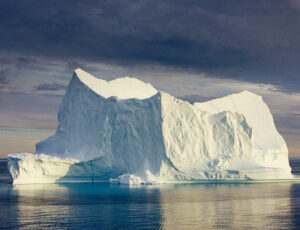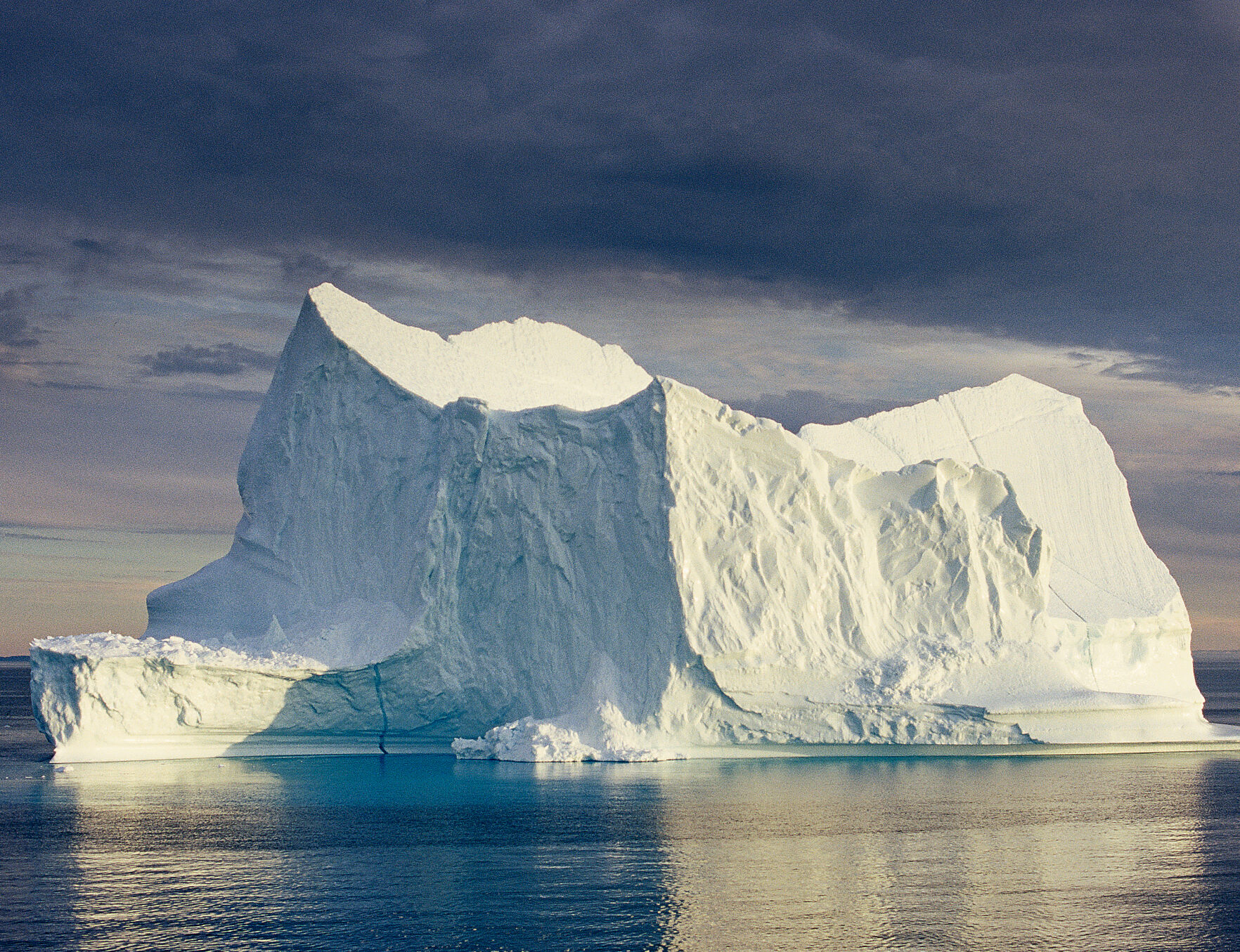In the vast and icy realms of the Arctic and Antarctic, icebergs drift silently across the ocean, embodying both beauty and mystery. These colossal ice formations, born from glaciers and broken off into the sea, are not only stunning natural wonders but also crucial indicators of climate change. Their towering structures and breathtaking blue hues captivate scientists and nature enthusiasts alike, providing a window into the complex interactions between ice, ocean, and atmosphere. As these floating giants traverse the frigid waters, they reveal valuable insights into the Earth’s changing climate and the delicate balance of our natural world.
Beyond their visual splendor, icebergs play significant roles in marine ecosystems. As they melt, they release fresh water and nutrients into the ocean, influencing local marine life and creating unique habitats. This process supports a range of species, from microscopic plankton to larger marine animals, highlighting the importance of icebergs in sustaining oceanic biodiversity. By studying icebergs, we gain a deeper understanding of their impact on global climate dynamics and the environment, reinforcing their significance in both scientific research and the broader context of our planet’s health.

Formation and Types
Icebergs embark on their journey when chunks of ice break away from glaciers or ice sheets in a process called calving. This phenomenon occurs at the edge of glaciers where the ice meets the ocean, and the resulting icebergs can vary dramatically in size, shape, and structure. The sheer diversity of icebergs is categorized into several distinct types, each with its own unique characteristics and formation processes.
(Types of Icebergs)
Tabular Icebergs: Tabular icebergs are among the largest and most striking of their kind. They are characterized by their flat, expansive surfaces and rectangular shapes, resembling a massive, floating table. These icebergs often originate from the calving of ice shelves or large, uniform glaciers. Their flat tops can extend for many miles, presenting an impressive and uninterrupted ice landscape. As they drift, their vast surfaces make them particularly notable and majestic.
Pinnacled Icebergs: Pinnacled icebergs are renowned for their dramatic, jagged peaks and deep fissures. They resemble a mountain range floating on the ocean, with sharp, protruding points and intricate ice formations. These icebergs form from the calving of glaciers with complex internal structures, where fractures and stress lines contribute to their rugged appearance. The peaks and valleys of pinnacled icebergs create a visually stunning contrast against the ocean surface.
Dome-Shaped Icebergs: Dome-shaped icebergs feature a smooth, rounded appearance, similar to large, rounded hills. They are often the result of a gradual calving process, where the ice breaks away in more gentle, curved shapes rather than sharp, angular pieces. The dome shape is created by the natural flow and movement of the ice, resulting in icebergs that appear as large, serene, and smoothly rounded forms floating on the water.
Growlers and Bergy Bits: Smaller fragments of ice, such as “growlers” and “bergy bits,” also contribute to the iceberg landscape. Growlers are ice pieces smaller than 1 meter (3 feet) above the waterline, while bergy bits range from 1 to 5 meters (3 to 16 feet) above water. Although they are not classified as full-sized icebergs, these smaller pieces can still pose significant risks to maritime navigation due to their unpredictable nature and the potential for sudden shifts in their position.
(Process and Factors Influencing Iceberg Formation)
The formation of icebergs is influenced by several interrelated factors that affect their size, shape, and stability:
Temperature: Ambient temperatures play a critical role in the calving process. Warmer temperatures can cause glaciers to melt and retreat more rapidly, increasing the likelihood of calving events. Conversely, colder temperatures can slow down the melting process, allowing icebergs to retain their shape and size for longer periods. The interaction between glacier ice and seawater temperature is crucial in determining the overall stability and longevity of icebergs.
Ice Thickness: The thickness of the ice from which an iceberg forms directly impacts its size and stability. Thicker ice can produce larger and more substantial icebergs, while thinner ice may yield smaller fragments. The structural integrity of the ice also affects the likelihood of calving; ice that is too thick or too stressed is more prone to breaking apart.
Glacier Movement: The movement of glaciers plays a significant role in iceberg formation. Glaciers that move rapidly or experience significant shear stress are more likely to produce icebergs. The dynamic nature of glacier flow can lead to frequent calving events and the formation of icebergs with diverse shapes and sizes. The interaction between glacier movement and ocean currents can further influence the characteristics of the resulting icebergs.
(Movement and Melting)
Once calved, icebergs begin their journey across the ocean, driven by various environmental forces:
Ocean Currents: Ocean currents are a primary factor in determining the trajectory of icebergs. These currents can steer icebergs along specific paths, which may lead them towards shipping lanes or warmer waters. The interaction between ocean currents and iceberg movement can create complex and unpredictable pathways.
Winds: Wind patterns also play a role in iceberg movement. Strong winds can push icebergs off their intended paths or accelerate their drift. The combination of winds and ocean currents can result in intricate and varied iceberg trajectories.
Temperature Changes: As icebergs travel through different water temperatures, they undergo melting and sublimation. This melting process can create distinctive features such as sculpted surfaces, pits, and hollows. The rate of melting is influenced by factors such as water temperature, iceberg size, and exposure to sunlight. Over time, these processes contribute to the unique and ever-changing appearance of icebergs.
The interplay of these factors results in icebergs that are not only awe-inspiring in their sheer size but also diverse and complex in their shapes and structures. Each iceberg’s journey through the ocean contributes to its unique characteristics and visual allure, making them fascinating subjects of study and observation.
Ecological Significance
Icebergs are not only breathtaking natural phenomena but also crucial components of marine ecosystems. Their presence has far-reaching effects on ocean chemistry, nutrient dynamics, and the health of various marine life forms. The role of icebergs extends beyond their immediate surroundings, influencing broader ecological and climatic systems.
(Nutrient Provision and Ecosystem Support)
Icebergs contribute significantly to the marine environment by providing both freshwater and essential nutrients. As icebergs melt, they release freshwater into the surrounding ocean, which can alter local salinity levels and create environments more suitable for specific marine species. This change in salinity can have cascading effects on the distribution and abundance of marine life, particularly in polar and subpolar regions where salinity fluctuations can impact the entire food web.
Beneath the icebergs, a thriving ecosystem of microorganisms and algae develops. The underside of icebergs often hosts dense communities of bacteria, algae, and other microorganisms, forming a unique and dynamic ecosystem. These microorganisms are adapted to the cold, nutrient-rich conditions and can thrive in the sheltered environment provided by the iceberg. The presence of these microbial communities supports higher trophic levels in the food chain, providing a food source for larger marine organisms such as fish and krill.
(Impact on Ocean Chemistry)
The melting of icebergs has significant implications for ocean chemistry. As icebergs disintegrate, they release trace elements and minerals, including iron, phosphorus, and silica, into the ocean. These nutrients are vital for the growth of phytoplankton, the microscopic plants that form the foundation of the marine food web. The introduction of iron and other nutrients can trigger phytoplankton blooms, which can lead to increased primary productivity in the surrounding waters.
Phytoplankton blooms, stimulated by the nutrients from melting ice, support a diverse array of marine organisms. This productivity is crucial for sustaining populations of small fish, krill, and larger marine mammals. In the Southern Ocean, for example, the high primary productivity driven by iceberg-derived nutrients supports large krill populations, which are a primary food source for species such as penguins, seals, and whales. These nutrient-driven blooms play a critical role in maintaining the health and productivity of marine ecosystems.
(Effects on Local Sea Ice and Ocean Currents)
Icebergs also influence local sea ice formation and ocean currents. The freshwater released from melting icebergs can lower the salinity of surrounding waters, affecting the formation and stability of sea ice. This change in salinity can influence sea ice thickness and distribution, with potential implications for local marine habitats and species that depend on sea ice for breeding and feeding.
Additionally, the movement and melting of icebergs can impact ocean currents. As icebergs drift through the ocean, they can alter the flow of water masses and influence ocean circulation patterns. These changes in current patterns can affect heat distribution and nutrient exchange between different oceanic regions. The interactions between icebergs and ocean currents play a role in the regulation of global climate systems by influencing the transfer of heat and salinity across the globe.
(Climate and Environmental Change)
The ecological significance of icebergs is closely tied to climate and environmental changes. Variations in iceberg dynamics, such as increased calving rates or accelerated melting due to rising temperatures, can impact marine ecosystems and climate systems. For example, the accelerated melting of icebergs due to global warming can contribute to rising sea levels and changes in ocean circulation patterns.
Understanding the role of icebergs in these processes is essential for predicting future changes in marine environments and climate patterns. Researchers study iceberg dynamics to gain insights into how changes in ice mass and distribution can affect global climate and ocean systems. Monitoring icebergs and their interactions with the environment helps scientists assess the impacts of climate change and develop strategies for managing and mitigating its effects.
In summary, icebergs are vital to marine ecosystems, playing a crucial role in nutrient cycles, supporting diverse microbial communities, and influencing ocean chemistry and currents. Their interactions with the environment have broad implications for climate systems and marine life, highlighting the importance of understanding and preserving these majestic ice formations.
Cultural and Historical Impact
Icebergs have captivated human imagination for centuries, serving as both symbols and subjects in a diverse array of contexts. Their majestic and often perilous nature has made them central to explorations, disasters, artistic representations, and scientific inquiries. The impact of icebergs extends far beyond their physical presence, shaping cultural narratives and scientific understanding.
(Historical Exploration and Maritime Disasters)
Throughout history, icebergs have been integral to the exploration of the polar regions. Early explorers faced numerous challenges navigating these icy waters. The formidable nature of icebergs often determined the success or failure of expeditions. For instance, during the Age of Exploration, figures like Roald Amundsen and Robert Peary had to carefully navigate through fields of icebergs to reach the North and South Poles. Their accounts provide detailed descriptions of the icebergs they encountered, highlighting both the beauty and the dangers associated with these ice formations.
The sinking of the RMS Titanic in 1912 is perhaps the most notorious iceberg-related maritime disaster. The Titanic, deemed “unsinkable,” collided with an iceberg during its maiden voyage, leading to one of the deadliest maritime disasters in history. The event had profound implications, leading to major reforms in maritime safety regulations, including the establishment of the International Ice Patrol to monitor iceberg threats in the North Atlantic. The Titanic tragedy remains a powerful symbol of human vulnerability in the face of nature’s immense power.
(Artistic and Literary Symbolism)
Icebergs have been powerful symbols in art and literature, representing a wide range of themes from the sublime to the foreboding. In art, icebergs are often depicted as symbols of nature’s grandeur and isolation. Romantic artists like Caspar David Friedrich used icebergs to evoke a sense of awe and contemplation, capturing the sublime beauty of these frozen giants. Their paintings often portray icebergs as monumental and mysterious, highlighting the contrast between human frailty and nature’s vastness.
In literature, icebergs have been employed as symbols of isolation, challenge, and the unknown. Herman Melville’s “Moby-Dick” uses the iceberg as a symbol of the unknown and the formidable forces of nature that characters must confront. The iceberg’s massive, often hidden nature reflects deeper themes of existential uncertainty and the limits of human knowledge. Modern literature and media continue to draw upon these themes, using icebergs to explore themes of environmental change, isolation, and the sublime power of nature.
(Modern Research and Environmental Impact)
In the contemporary scientific landscape, icebergs are a focal point for research on climate change and environmental impact. Advances in technology, such as satellite imagery and aerial surveys, have revolutionized our ability to monitor iceberg dynamics. Researchers track iceberg movements, melting rates, and interactions with ocean currents to understand their impact on sea levels and global climate patterns. These studies are essential for predicting future climate scenarios and assessing the potential impacts of ice loss on coastal communities.
Additionally, the study of icebergs contributes to our understanding of glacial dynamics. By analyzing iceberg calving and melting processes, scientists can gain insights into the behavior of glaciers and ice sheets. This research is crucial for predicting future changes in ice mass and its contributions to sea level rise.
(Innovative Uses and Future Prospects)
The potential uses of icebergs extend beyond their environmental impact. As global water scarcity becomes a pressing issue, innovative projects are exploring the feasibility of towing icebergs to arid regions. These projects aim to harness the freshwater potential of icebergs, providing a new source of water for regions facing severe drought conditions. The concept involves towing icebergs from polar regions to warmer areas where they can be melted and used to replenish water supplies. While technically challenging and costly, these projects highlight the creative solutions being considered to address global water shortages.
(Cultural Representation and Ongoing Exploration)
Icebergs continue to be a source of inspiration and intrigue in popular culture. Documentaries, films, and photography often highlight their stunning beauty and the challenges associated with studying them. These representations contribute to a broader public awareness of the importance of icebergs in the global ecosystem and the need for their conservation.
Looking to the future, the study and exploration of icebergs will remain a vital area of scientific and cultural interest. Their role in climate research, environmental science, and cultural representation underscores their significance in both natural and human contexts. As we advance our understanding of icebergs, we continue to explore their impact on the environment and their place in human history and imagination. The ongoing fascination with icebergs reflects our enduring quest to understand and appreciate the natural world.
Conclusion,
Icebergs are far more than just stunning natural spectacles; they are pivotal to understanding our planet’s environmental changes. These floating giants provide crucial insights into the state of our climate, revealing how shifting temperatures and melting ice impact global systems. Their majestic presence in polar regions serves as a stark reminder of the delicate balance within Earth’s climate and the pressing need to address climate change proactively.
Moreover, icebergs play a significant role in marine ecosystems. As they melt, they release essential nutrients and fresh water into the ocean, supporting a diverse range of marine life and contributing to the health of marine habitats. Studying icebergs helps us appreciate their role in sustaining oceanic biodiversity and underscores the importance of preserving these natural wonders. Through ongoing research and observation, we can continue to uncover the secrets of icebergs and their profound impact on both the environment and climate dynamics.



